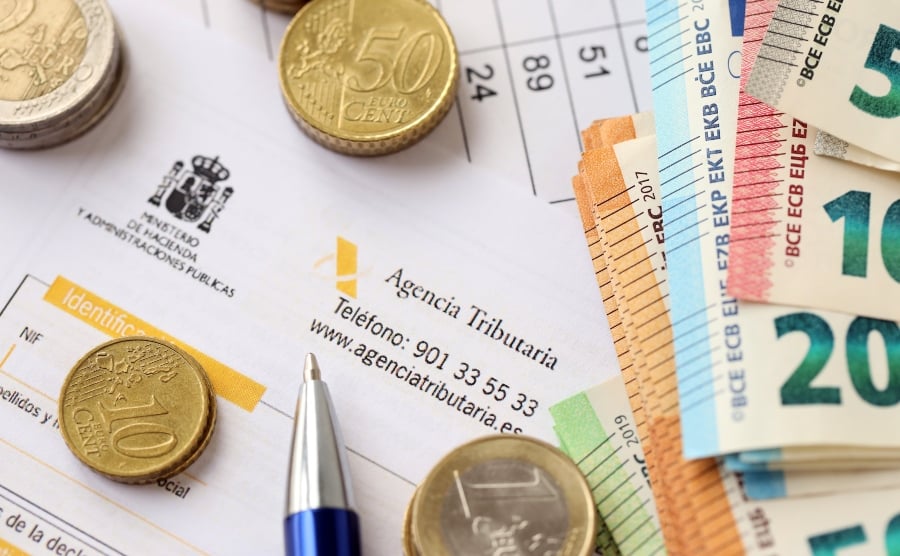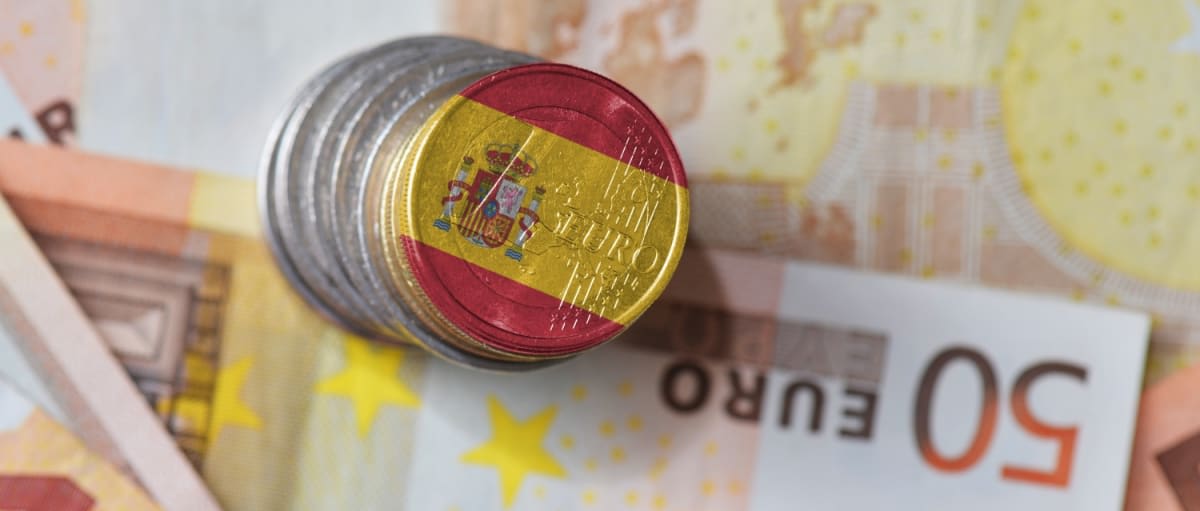If you’re buying property in Spain, understanding how the tax system works is essential for budgeting and avoiding costly surprises. This guide demystifies what you’ll pay, where the rules differ by region and how to get ahead of any hidden costs.
The Spanish tax landscape can be confusing. Costs vary by region, change frequently and can differ significantly depending on whether you’re a resident or not. Getting to grips with it early on can save you thousands – and a major headache.
In this guide, you’ll find everything you need to know about Spanish property taxes in 2025, from what you’ll pay upfront to ongoing ownership costs and the tax due when you sell. We’ve also included a breakdown of regional tax rates and guidance on exemptions – all explained clearly and in plain English.
Download the Spain Buying Guide
Contents
Taxes when buying property in Spain
1. Property transfer tax (ITP)
The most significant cost when buying a second-hand property is the transfer tax – Impuesto de Transmisiones Patrimoniales (ITP). Rates vary between regions and are typically higher for more expensive properties. For instance, in Andalusia, you’ll pay 7% and in Valencia (the Costa Blanca) it’s 10%.
Unlike UK stamp duty, which is based on property price bands, Spanish ITP is often a flat rate or escalated in tiers depending on the value. You pay this once, when the property is officially registered in your name.
2. VAT (IVA) on new builds
If you’re buying directly from a developer or investing in a newly built home, you’ll pay value added tax (IVA) instead of ITP. This is currently set at 10% for residential property and 21% for plots of land or commercial premises. IVA must be paid from a Spanish bank account and is typically due in stages if you’re buying off-plan.
3. Stamp duty (AJD)
Known locally as Actos Jurídicos Documentados (AJD), stamp duty is charged on the notarial deeds. Again, this varies depending on the region:
- 1.2% in Andalusia and the Balearics
- 1.5% in Valencia
- 0.75% in the Canary Islands
You usually pay stamp duty alongside your notary fees, often within a few days of completing the sale. Your lawyer or notary will usually handle this automatically.
Taxes on owning Spanish property

1. Annual property tax (IBI)
The Impuesto sobre Bienes Inmuebles (IBI) is comparable to council tax in the UK or property tax in the US. It’s calculated based on the cadastral value of your property – usually lower than market value – and the rate is set by the local authority. Expect to pay between 0.2% and 1.5% annually.
The tax is typically due in two instalments, in June and November. Many town halls offer payment plans via a direct debit. Some also reduce rates for properties with solar panels or other environmental upgrades.
In Alicante and parts of the Costa Blanca, IBI is referred to as “SUMA”. Don’t let the terminology trip you up – it’s still the same tax.
2. Waste collection (Basura)
This is a local levy for rubbish collection and waste disposal. In most regions, it’s a modest fee – usually between €50 and €300 per year – but again, it depends on the local council.
3. Wealth tax
Spain’s Impuesto sobre el Patrimonio (wealth tax) applies to your net assets, not just your property. Spanish residents are taxed on worldwide assets; non-residents are taxed only on assets located in Spain.
Everyone benefits from a basic allowance of €700,000 and an additional €300,000 for your main home. Rates range from 0.2% to 2.5%. However, some autonomous regions like Madrid and Andalusia currently apply 100% relief, meaning no wealth tax is due there – though this may change with future governments.
4. Rental income tax
If you’re letting out your Spanish property, income tax applies. The rules are strict:
- Non-residents (non-EU): A flat 24% rate on rental profits. Historically, no deductions were allowed, but a July 2025 court ruling has started to change this and non-EU landlords may soon be able to deduct genuine expenses and claim refunds. The position is still evolving, so it’s essential to get up-to-date advice before you file.
- Non-residents (EU/EEA): 19% with deductions for eligible expenses such as maintenance, insurance and mortgage interest.
- Residents: Taxed at progressive income tax rates (up to around the mid-50s), with certain rental costs deductible against your profits. The exact rate depends on which region you live in.
You must declare this income annually, and failure to do so can result in fines or audits.
It’s worth noting here that if you plan to let your home short-term (holiday or seasonal rentals), you now need a Rental Registration Number (NRA), even if you already have a tourist licence. Since 1st July 2025, properties without a valid NRA cannot legally be advertised on platforms such as Airbnb or Booking.com, and non-compliant listings are being removed. Your lawyer or tax adviser can help you register correctly.
5. Imputed income tax
Spain assumes that second homes owned by non-residents could be rented out. So, even if you leave your property empty, you’ll still pay a notional tax on its potential rental value. This is based on 1.1% to 2% of the cadastral value, taxed at 19% (EU) or 24% (non-EU).
Taxes on selling property in Spain
1. Capital gains tax (CGT)
If you sell your Spanish property for more than you paid, you’ll owe capital gains tax (Impuesto sobre la Ganancia Patrimonial). The amount depends on your residency status and the size of your gain:
- Non-residents: 19%
- Residents:
- 19% for gains up to €6,000
- 21% from €6,000 to €50,000
- 23% from €50,000 to €200,000
- 26% over €200,000
There’s also a 3% retention tax on non-resident sellers. This is withheld by the buyer and paid to the Spanish tax office to cover your CGT liability. If your gain is lower, you can claim a refund.
2. Exemptions and reductions
There are a few reliefs available:
- If you’re over 65 and have lived in the home for at least three years as your main residence, CGT does not apply.
- Residents who reinvest the proceeds into a new main home within two years can claim the “main home exemption.”
Your lawyer or accountant can help you calculate and apply for these exemptions.
Why professional advice matters
Spain’s tax system isn’t just layered – it’s also subject to frequent change. For example, in January 2025, Prime Minister Pedro Sánchez proposed a controversial 100% property surcharge for non-EU buyers. While the proposal is unlikely to pass, it highlights how quickly fiscal policies can shift.
On top of that, the European Commission has opened formal proceedings against Spain over aspects of the tax system for non-resident property owners. Nothing changes for now, but rules on things like imputed income may evolve over the next few years. All the more reason to rely on a local specialist who keeps up with the latest developments.
To navigate this landscape with confidence, always seek advice from a registered tax advisor or lawyer based in Spain. UK or US-based accountants may not be authorised to file on your behalf – and may not understand regional nuances that could save you money.
Speak to a Spain property expert
Summary
Understanding Spanish property tax isn’t just about ticking legal boxes – it’s about protecting your investment and planning for the future. With the right support and a bit of forward thinking, you’ll be well prepared to enjoy your home in the sun with peace of mind.
FAQs about property tax in Spain
As a homeowner in Spain, you’ll usually pay three ongoing taxes: annual property tax (IBI), waste collection (Basura) and, if you’re a non-resident, imputed income tax on second homes. If you rent out the property, rental income tax also applies. Depending on your wealth and location, wealth tax may apply too.
The amount varies by region and by property. Most owners pay IBI at roughly 0.2%–1.5% of the cadastral value, plus a yearly waste collection fee that ranges from about €50 to €300. Non-residents also owe imputed income tax, which is calculated using 1.1%–2% of the cadastral value, taxed at 19% for EU owners and 24% for non-EU owners.
Brits are treated the same as other non-EU owners. You’ll pay IBI, Basura and imputed income tax on second homes, and rental income tax at 24% if you let the property. A recent 2025 court ruling may allow non-EU owners, including Brits, to deduct genuine rental expenses, so it’s worth getting up-to-date local advice.
You might also like:









